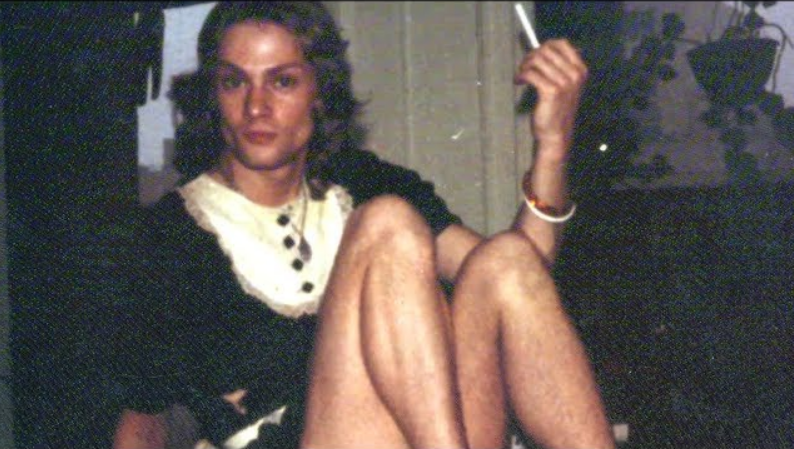Something about the retroactive relabeling of glam rock as "genderqueer" really annoys me and I can& #39;t quite place it.
Queerness isn& #39;t just a style or a scene. A lot of big glammy performers (Lou Reed, David Bowie) wore glittery omnisexual veneers *in specifically commercial contexts*, and then later repented, once it wasn& #39;t so cool, and almost always on (trans)misogynistic, anti-faggot terms.
Women didn& #39;t really have this option... there wasn& #39;t so much place for femaleness (gender-conforming or not) in glam scenes, & that includes no space for trans femaleness, except as an ironic postmodern muse to men who would never "go that far." (Jayne County excepted.)
https://www.youtube.com/watch?v=9ELPk8O28d4
Jayne">https://www.youtube.com/watch... is great, for the record. She is probably a Stonewall veteran (as may be her friend, Holly Woodlawn) but isn& #39;t talked about so much in that context. In glam punk she& #39;s treated much more peripherally than her long career deserves.
Jayne">https://www.youtube.com/watch... is great, for the record. She is probably a Stonewall veteran (as may be her friend, Holly Woodlawn) but isn& #39;t talked about so much in that context. In glam punk she& #39;s treated much more peripherally than her long career deserves.
Glam did open up a space for (mostly male) queerness to make it, but the biggest performers who wore it sincerely (and best, imo), like Jobriath, now seem relegated to the scene& #39;s deep cuts? Partly because Jobriath died from AIDS, I suspect.
Now we have cases where multiple transphobes adore Prince, a man who hit on 16-year-olds, and David Bowie, a statutory rapist, as some kind of antidote for transgender womanhood? And I think I mostly understand the facile genderplay that gives these men appeal to transphobes.
I think David Bowie or Marc Bolan retain a masculine core that lets me be attracted to them in a deeply heterosexual way. Plus, I also get hot watching a film like Velvet Goldmine as glam fantasy, a fulfillment of glam& #39;s queer promise, which loans that heterosexuality subversion.
I think the phobic association of bisexuality with promiscuity really owes so much to the glam scene and time period... because dreamlike omnisexuality, like licking a guitar under a fog machine or whatever, implied greater subversion and was very easy to do.
I kind of feel like this is all vaguely similar (w/o the racist element ofc) to attitudes around Madonna& #39;s "Vogue" in the 1990s, expressed in the second season of Pose. Those who pioneer the style aren& #39;t celebrated so much as caught up in a commercial drive to appear authentic.
The result is the slow reduction of queerness as a sexual politics, queerness as an approach to life and feeling, or even just queerness as a demographic, to an aesthetic, easily appropriated or disregarded. But aesthetics have often felt so secondary to me, a known queer.
A lot of these issues played out more recently and more severely in the band PWR BTTM (which I was *extremely* close to), who were glam in many ways, and sold an ultimately hollow commitment to cwazy qweer politics as their look and sound.
Commercial interests maintain androgyny as subversive in order to sell it? But many androgynes aren& #39;t interested in subversion & aren& #39;t making money by it, at least not as successfully. We just want like, housing & food & love, and that becomes subversive because of who we are.
I don& #39;t know if this made sense... I should read more, it& #39;s still really difficult to parse what exactly about glam, and glam& #39;s place in today& #39;s gender consciousness, makes me so uncomfortable as a trans woman who otherwise loves a lot of its music.
What glam definitely was, and what I can always appreciate it for, was inspiration, for many queer kids, especially gay men, to come out and lives their lives well. I think we see glam as queerer than it is, and that vision is beyond value.

 Read on Twitter
Read on Twitter


